Did you know that pheasant hunting has a rich history dating back to ancient times? From royalty to commoners, people have been captivated by the thrill and challenge that this sport offers. Today, pheasant hunting continues to be a popular pastime for outdoor enthusiasts and sportsmen alike.
If you’re eager to embark on your own pheasant hunting adventure, this comprehensive guide is here to equip you with expert tips and essential information. Discover everything you need to know about pheasant season, from hunting techniques to gear recommendations, and elevate your experience in the field.
Before we delve into the specifics, take a moment to appreciate the beauty and majesty of these magnificent birds:
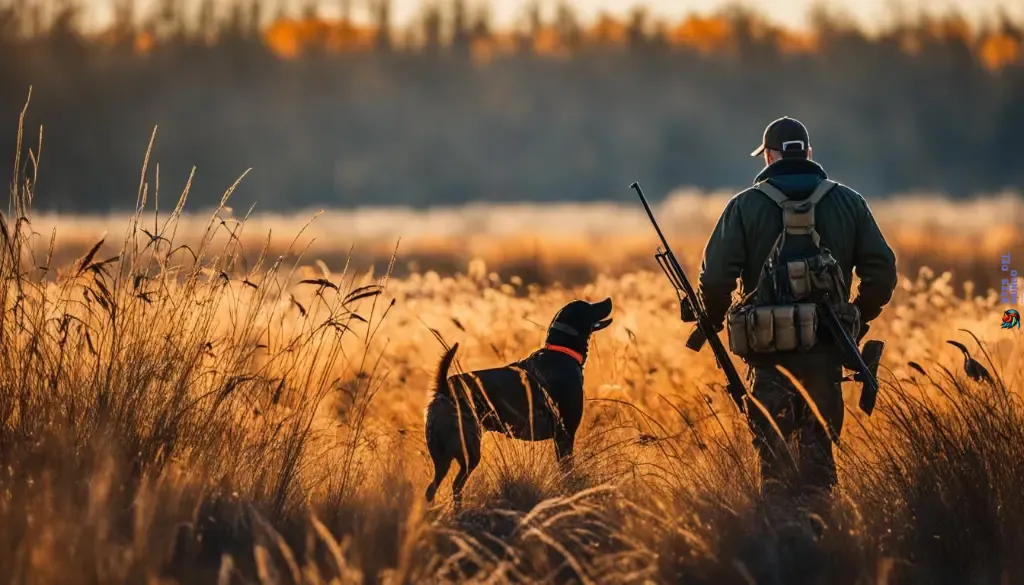
Understanding Pheasant Behavior
Before heading out to hunt pheasants, it’s crucial to understand their behavior and preferred habitats. By gaining insight into pheasant behavior, you can increase your chances of a successful hunting experience. Let’s take a closer look at pheasant feeding patterns, roosting areas, and their natural habitat requirements.
Feeding Patterns and Roosting Areas
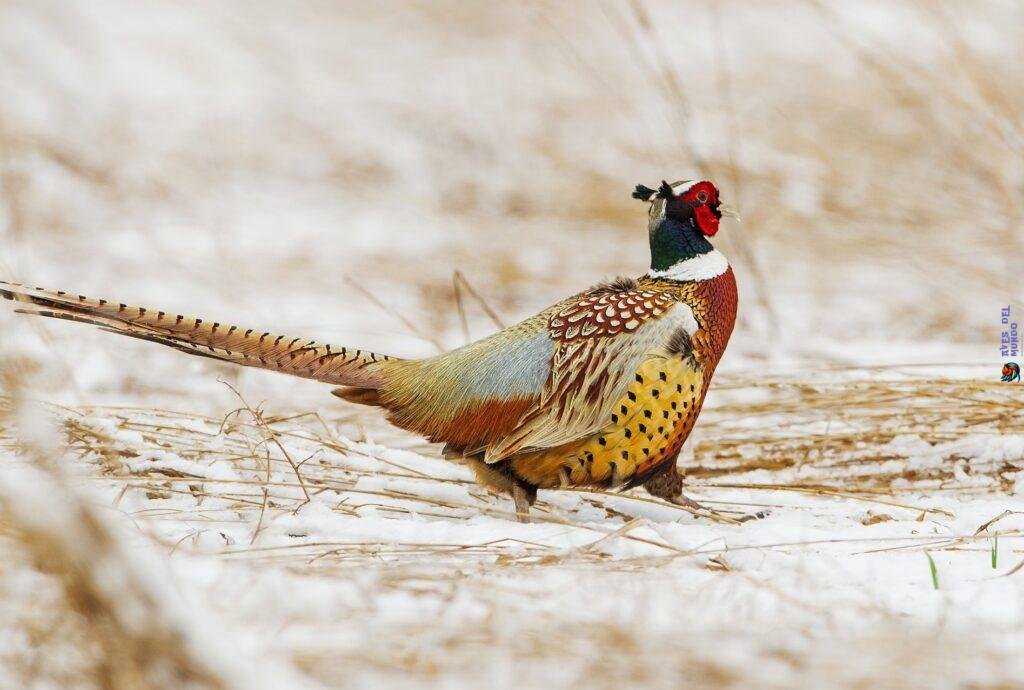
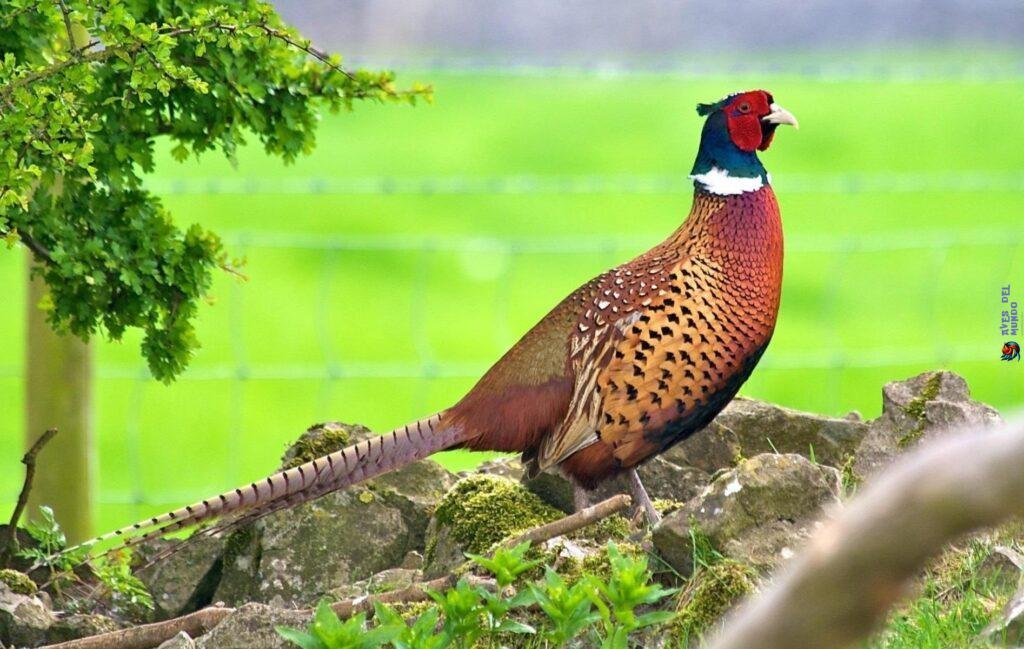
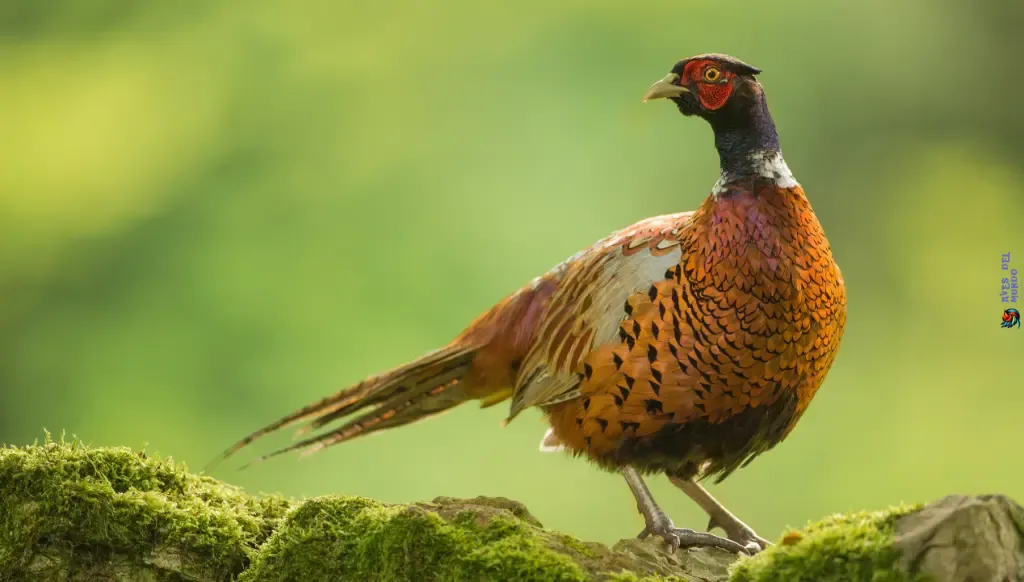
Pheasants are primarily ground-dwelling birds that forage in open fields and grassy areas. They feed on a variety of plant material, including seeds, grains, berries, and insects. Pheasants are known for their selective feeding behavior, targeting certain food sources depending on their availability in each season.
When analyzing pheasant feeding patterns, keep in mind that they tend to feed early in the morning and late in the afternoon. These feeding times coincide with their daily movement from roosting areas to feeding grounds and back. Pheasants often roost in dense shrubs, tall grasses, and areas with sufficient cover to provide protection from predators.
Natural Habitat Requirements
Pheasants thrive in diverse, well-managed habitats that offer a balance of food, cover, and nesting opportunities. They typically prefer areas with a mixture of cropland, grasslands, brushy habitats, and woods. Chances of encountering pheasants increase in landscapes that provide all of these elements in proximity.
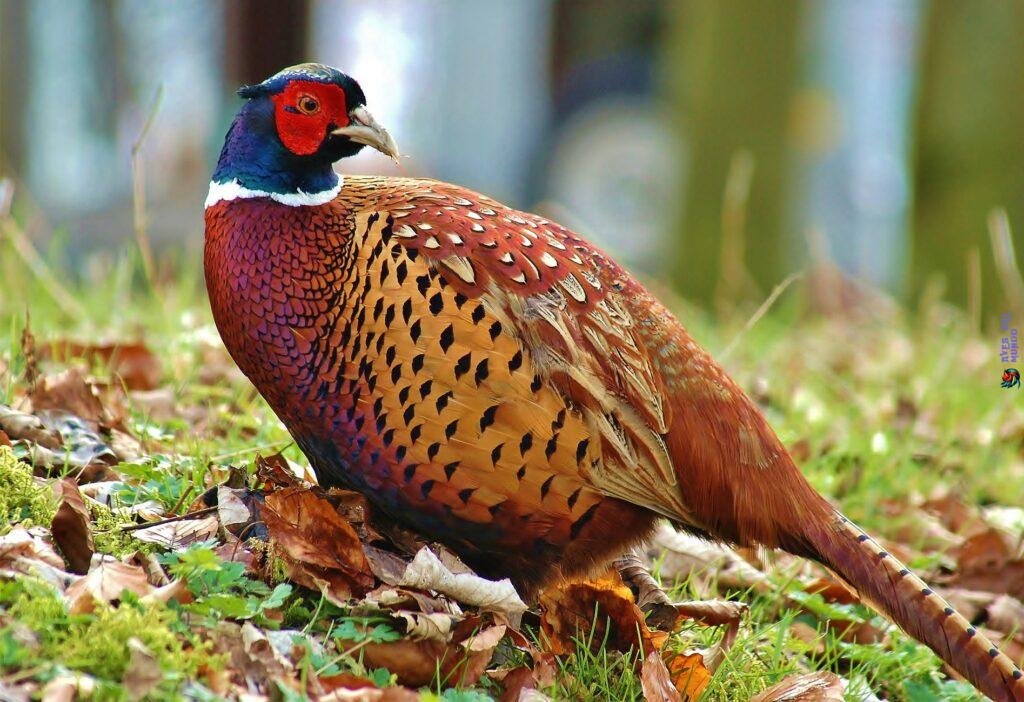
Good pheasant habitat offers abundant food sources, such as standing crops, weedy fields, and areas with dense vegetation that harbor bugs and insects. Areas with ample cover, such as grassy patches, hedgerows, and brush piles, provide refuge and protection for nesting pheasants. Additionally, the availability of secure nesting sites, such as tall grasses, thickets, or along field edges, is an important consideration for pheasant habitat management.
Understanding pheasant behavior and their natural habitat requirements is vital for successful pheasant hunting. By identifying their feeding patterns, locating roosting areas, and scouting suitable habitats, you can strategically plan your hunting trips and maximize your chances of a fruitful outing.
| Feeding Patterns | Roosting Areas | Natural Habitat Requirements |
|---|---|---|
| Pheasants primarily feed on seeds, grains, berries, and insects. | Pheasants roost in dense shrubs, tall grasses, and areas with sufficient cover. | Pheasants thrive in diverse habitats with a mixture of cropland, grasslands, brushy habitats, and woods. |
| Feeding times often occur early morning and late afternoon. | Roosting areas offer protection from predators. | Good habitats provide abundant food sources, ample cover, and secure nesting sites. |
By harnessing this knowledge, you can strategically position yourself in the field and increase your chances of encountering pheasants during your next hunting expedition.
Gear and Equipment for Pheasant Hunting
Selecting the right gear and equipment is crucial for a successful and enjoyable pheasant hunting experience. Having the proper tools not only increases your chances of a successful harvest but also ensures your safety and comfort in the field. Here, we provide you with a comprehensive list of essential pheasant hunting gear recommendations:
- Shotguns: A reliable shotgun is the cornerstone of any pheasant hunter’s gear collection. Look for models with a gauge suitable for pheasant hunting, such as 12 or 20 gauge. Popular brands include Remington, Browning, and Beretta.
- Ammunition: Stock up on high-quality ammunition specifically designed for pheasants. Opt for loads with suitable shot sizes, such as #4, #5, or #6. Consider brands like Winchester, Federal, or Kent for reliable performance.
- Hunting Vests: A well-designed hunting vest will not only keep you organized but also provide easy access to your essential hunting gear. Look for vests with plenty of pockets, shell holders, and a comfortable fit. Recommended brands include Browning, Filson, and Orvis.
- Boots: Invest in a sturdy pair of hunting boots that offer excellent support, insulation, and waterproofing. Quality brands like Irish Setter, Danner, and Lacrosse excel in durability and comfort.
- Hunting Accessories: Several accessories can enhance your pheasant hunting experience. These include binoculars, game calls, choke tubes, choke wrenches, shooting glasses, and hearing protection. Choose trusted brands like Leupold, Primos, Carlson’s, and Howard Leight.
Remember to consider your personal preferences, hunting environment, and budget when selecting your gear. It’s important to invest in reliable and high-quality equipment to maximize your chances of a successful hunt.
To further assist you in making informed gear choices, here’s a comprehensive table summarizing the recommended pheasant hunting gear:
| Gear | Recommended Brands |
|---|---|
| Shotguns | Remington, Browning, Beretta |
| Ammunition | Winchester, Federal, Kent |
| Hunting Vests | Browning, Filson, Orvis |
| Boots | Irish Setter, Danner, Lacrosse |
| Hunting Accessories | Leupold, Primos, Carlson’s, Howard Leight |
With these gear and equipment recommendations, you’ll be well-equipped to embark on your pheasant hunting adventures confidently. Remember to always prioritize safety and adhere to local hunting regulations. Happy hunting!
Hunting Techniques for Pheasants
Successful pheasant hunting requires more than just luck. It demands skillful execution of proven hunting techniques. By mastering the art of flushing, stalking, and ambushing, you can enhance your chances of a fruitful hunt. Here are some strategies and tips to help you optimize your pheasant hunting experience:
1. Flushing Technique
If you want to flush out pheasants from cover, start by identifying likely areas such as thick grass, brushy edges, or hedgerows. Approach these areas with caution, keeping a low profile and minimizing noise. Use a dog to help you detect and flush out birds. Be prepared for fast-flying pheasants as they burst out of hiding. Keep your shotgun shoulder-ready and practice quick, fluid movements to take a accurate shot.
2. Stalking Technique
Stalking pheasants derives its effectiveness from staying quiet and maintaining a steady pace. Move slowly, using cover to your advantage. Utilize natural obstacles such as trees, shrubs, or terrain features to conceal your movement. Keep an eye out for any movement or sound that gives away a bird’s presence. Once you spot a pheasant, freeze and observe its behavior. Plan your approach accordingly, being mindful of wind direction to avoid alerting the bird to your presence. Take a precise and controlled shot when you have a clear view.
3. Ambushing Technique
Ambushing involves setting up in a strategic location where pheasants are likely to pass by. Choose spots near feeding areas, roosting sites, or known travel corridors to maximize your chances of success. Conceal yourself by blending into the surroundings using camouflage clothing or natural cover. Remain motionless and patient while waiting for pheasants to approach. When the timing is right, take a well-aimed shot to ensure a clean and ethical harvest.
Incorporating these hunting techniques into your strategy can significantly improve your pheasant hunting success. Remember to prioritize safety at all times, be respectful of your surroundings, and always abide by local hunting regulations.
Pheasant Conservation and Responsible Hunting
As responsible hunters, it’s crucial that we prioritize pheasant conservation efforts to ensure the long-term viability of these magnificent game birds. Conserving pheasant populations is not only essential for future generations of hunters but also contributes to the overall health and balance of ecosystems.
Pheasant conservation organizations play a vital role in safeguarding these species and their habitats. They focus on habitat restoration, land management, and research to maintain and enhance pheasant populations. By supporting these organizations, you actively participate in the preservation of pheasants and their ecosystems.
Another aspect of responsible hunting is understanding and adhering to bag limits. Bag limits are established to prevent overharvesting, giving pheasants the opportunity to repopulate and thrive. By respecting bag limits, you contribute to the sustainability of pheasant populations and help maintain a healthy balance between hunting and conservation efforts.
Additionally, hunting ethics play a significant role in responsible hunting practices. It is essential to engage in fair chase, respecting the natural behavior and habitats of pheasants. This includes not disrupting active nesting areas, avoiding excessive disturbance to the birds, and refraining from using illegal hunting methods.
«The future of pheasant hunting depends on responsible hunters who prioritize the well-being of these beautiful birds and their habitats. Conservation and ethical practices go hand in hand, ensuring a sustainable and enjoyable hunting experience for generations to come.»
Ways to Preserve Pheasant Populations
Aside from supporting conservation organizations and abiding by bag limits, there are several ways you can actively contribute to pheasant conservation:
- Participate in habitat restoration projects, such as establishing cover crops, planting native grasses, and creating shelterbelts.
- Practice selective hunting by targeting roosters while leaving hens unharmed to promote successful breeding and population growth.
- Report sightings of illegal hunting activities, habitat destruction, or other threats to pheasants to the appropriate authorities.
- Engage in responsible dog training and use trained dogs for hunting pheasants. Well-trained dogs minimize stress on the birds and improve hunting efficiency.
- Educate others about pheasant conservation and the importance of responsible hunting practices, spreading awareness and inspiring others to take action.
| Pheasant Conservation Organizations | Description |
|---|---|
| Pheasants Forever | A nonprofit organization dedicated to the protection and enhancement of pheasant and other wildlife populations through habitat restoration, public education, and land management. |
| Quail Forever | Works alongside Pheasants Forever to conserve quail, pheasant, and other wildlife habitats through local chapters, habitat projects, and youth education programs. |
| National Wild Turkey Federation | Although primarily focused on wild turkey conservation, this organization also contributes to the preservation of pheasant habitats, as healthy ecosystems benefit multiple species. |
By actively participating in pheasant conservation efforts and exhibiting responsible hunting practices, you contribute to the long-term survival of these magnificent birds. Let’s work together to ensure that pheasants continue to grace our fields and provide thrilling hunting experiences for generations to come.
Pheasant Season and Hunting Regulations
When it comes to pheasant hunting, it is crucial to understand the specific regulations that govern the sport in your area. Familiarizing yourself with these regulations will ensure that you have a safe and legal hunting experience. Here are some key aspects to consider:
Licensing Requirements:
Before embarking on a pheasant hunting adventure, make sure to acquire the necessary licenses and permits. These requirements vary depending on your location and may include a hunting license, a small game permit, or specific pheasant stamps. Check with your local wildlife agency or game and fish department to ensure compliance.
Pheasant Hunting Season:
Each state or region designates specific dates for pheasant hunting season. It is important to be aware of these dates to ensure that you are hunting within the legal timeframe. Typically, the pheasant season coincides with the time when pheasants are abundant and the population can sustain hunting pressure. Knowing the season dates helps you plan your hunting trips accordingly.
Bag Limits:
Bag limits refer to the maximum number of pheasants an individual hunter can harvest per day or during the entire season. These limits are put in place to conserve the pheasant population and promote sustainable hunting practices. It is crucial to adhere to these limits to protect the species and maintain healthy populations for future seasons.
Special Restrictions:
In addition to licensing requirements and bag limits, it is important to be aware of any special restrictions that may apply. These restrictions can include specific hunting zones, time restrictions, or weapon regulations. Familiarize yourself with these guidelines to ensure you are in compliance with the law.
«Understanding and following the hunting regulations not only keeps you on the right side of the law but also helps conserve the pheasant population for future generations.» – Anonymous Hunter
By familiarizing yourself with the pheasant hunting season and the specific regulations in your area, you can ensure a responsible and enjoyable hunting experience. Remember, responsible hunting practices not only protect the pheasant population but also contribute to the preservation of our natural heritage.
Preparing Pheasant Meat and Delicious Recipes
Once you’ve successfully harvested a pheasant, it’s time to savor the rewards of your efforts. Pheasant meat is known for its rich flavor and versatility in various dishes. In this section, we’ll explore essential tips for cleaning and preparing pheasant meat, along with mouth-watering recipes that will elevate your culinary experience.
Cleaning and Preparing Pheasant Meat
Properly cleaning and preparing pheasant meat is crucial for maximizing its taste and tenderness. Follow these steps to ensure a delicious outcome:
- Start by plucking the feathers from the pheasant. Take care to remove all feathers, ensuring a clean and presentable bird.
- Once the feathers are removed, carefully clean out the insides of the pheasant, removing the organs and any excess fat or debris.
- Rinse the pheasant thoroughly under cold water to remove any remaining impurities.
- To enhance tenderness and flavor, consider brining the pheasant. Soak it in a brine solution (saltwater or a flavor-infused brine) for a few hours or overnight.
- Before cooking, pat the pheasant dry with paper towels. This ensures a better sear and prevents excess moisture during the cooking process.
With your pheasant meat now prepared, it’s time to dive into some delectable recipes that will tantalize your taste buds.
Delicious Pheasant Recipes
| Recipe | Description |
|---|---|
| Pan-Seared Pheasant Breast | Enjoy the succulent flavors of pan-seared pheasant breast seasoned with aromatic herbs and spices. |
| Pheasant Casserole | Indulge in a comforting and hearty casserole featuring tender pheasant meat, vegetables, and savory gravy. |
| Pheasant Piccata | Elevate your pheasant with a tangy and exquisite piccata sauce, perfectly complementing the delicate meat. |
| Pheasant Stir-Fry | Experience a fusion of flavors and textures with a vibrant stir-fry showcasing pheasant, fresh vegetables, and aromatic spices. |
These recipes serve as a starting point for exploring the culinary possibilities of pheasant meat. Feel free to experiment with different flavors, sauces, and cooking techniques to create your own unique pheasant masterpieces.
Now that you have the knowledge and recipes to prepare pheasant meat, it’s time to roll up your sleeves and embark on a culinary adventure. Get ready to impress your family and friends with the tantalizing flavors of these pheasant recipes.
Understanding Pheasant Feathers and Their Use
Pheasant feathers possess unique qualities that extend far beyond their relevance to hunting. These feathers have become popular in various crafts, such as fly tying and as decorative materials for clothing and accessories. Let’s explore the versatility and beauty of pheasant feathers.
The Beauty of Pheasant Feathers
Pheasant feathers exhibit an exquisite blend of colors and patterns, making them a favored choice for decorative purposes. Their distinctive barbs and vibrant hues make them ideal for adding flair to hats, jewelry, and garments. Additionally, the long and elegant tail feathers are often used as accents in floral arrangements and centerpieces.
Pheasant Feathers in Crafts and Fly Tying
Pheasant feathers have found their way into the realm of crafts, offering endless possibilities for creative individuals. Whether you’re making dreamcatchers, feathered earrings, or intricate headdresses, pheasant feathers add a touch of natural elegance to any handcrafted item. Moreover, their unique colors and textures make them perfect for fly tying, enhancing the appeal and effectiveness of fishing flies.
Applications in Fashion
The fashion industry has embraced the allure of pheasant feathers. Designers incorporate these feathers into clothing, creating eye-catching details on dresses, capes, and accessories like handbags and shoes. The lightweight yet bold nature of pheasant feathers adds a striking element to high-end fashion pieces, elevating style to new heights.
Pheasant Feather Table
The following table showcases the various applications of pheasant feathers in different creative domains:
| Application | Examples |
|---|---|
| Crafts | Dreamcatchers, feather earrings, headdresses |
| Fly Tying | Fishing flies, lures |
| Fashion | Dresses, capes, accessories |
| Floral Arrangements | Centerpieces, bouquet embellishments |
From the creative realm to the fashionable runway, pheasant feathers captivate with their natural beauty and versatility. Let your imagination soar as you explore ways to incorporate these exquisite feathers into your crafts, fly tying, and personal style.
Pheasant Hunting Safety Measures
When participating in pheasant hunting, prioritizing safety is of utmost importance. By following crucial safety guidelines and taking necessary precautions, you can ensure a secure and enjoyable experience for yourself and your fellow hunters. Here are some essential safety measures to keep in mind:
- Always handle firearms responsibly: Treat every firearm as if it is loaded, keep the muzzle pointed in a safe direction, and only place your finger on the trigger when ready to shoot.
- Wear appropriate safety gear: Ensure you have a well-fitting and certified blaze orange hat, vest, or jacket to enhance visibility and minimize the risk of accidental shootings.
- Be aware of your surroundings: Before shooting, carefully identify your target and what lies beyond it. Avoid shooting in the direction of buildings, roads, or any other potentially hazardous areas.
- Communicate with fellow hunters: Establish clear communication signals with your hunting companions to ensure everyone is aware of each other’s locations and movements. Use verbal cues or hand signals to maintain constant communication in the field.
- Practice firearm safety: Always keep the safety engaged until ready to shoot, and never transport a loaded firearm in a vehicle. Store firearms securely at all times when not in use.
- Know and follow hunting regulations: Familiarize yourself with the specific hunting regulations in your area, including bag limits, hunting seasons, and any additional requirements or restrictions.
In addition to these safety measures, it is crucial to stay informed about the current hunting conditions, weather forecasts, and other potential risks that may arise. Remember, a safe hunting experience is a successful hunting experience.
By adopting these safety precautions, you can enjoy the thrill of pheasant hunting while minimizing risks and ensuring the well-being of everyone involved.
Pheasant Hunting Etiquette and Tips for Novice Hunters
Whether you’re a novice hunter or an experienced enthusiast, mastering proper pheasant hunting etiquette is essential. By observing proper etiquette, you not only show respect for the sport and fellow hunters but also contribute to a safer and more enjoyable hunting experience for everyone involved.
Pheasant Hunting Etiquette Guidelines
- Be mindful of your surroundings: When hunting pheasants, always be aware of other hunters and their positions. Maintain a safe distance and avoid shooting towards areas where other hunters may be located.
- Communicate with fellow hunters: Before starting the hunt, establish clear communication signals or commands with your hunting partners. This helps avoid confusion and promotes coordination in the field.
- Respect private property: Obtain permission from landowners before hunting on private land. Treat the property with respect, closing gates, picking up trash, and minimizing any damage caused by hunting activities.
- Practice firearm safety: Always handle firearms responsibly and follow proper gun safety protocols. Keep the muzzle pointed in a safe direction, finger off the trigger until ready to shoot, and be aware of the firearm’s condition at all times.
- Control your dog: If hunting with a dog, ensure it is well-trained and under control. Avoid allowing your dog to disturb other hunters or their dogs and be respectful of any «no dogs allowed» areas.
Novice Hunter Tips
- Learn from experienced hunters: Seek guidance and mentorship from experienced pheasant hunters. They can provide invaluable insights, techniques, and safety tips that will enhance your hunting skills.
- Practice shooting skills: Before hitting the field, spend time honing your shooting skills at shooting ranges. This helps build confidence and accuracy, ensuring ethical and effective shots.
- Research pheasant behavior: Familiarize yourself with pheasant behavior, feeding patterns, and habitat preferences. Understanding their habits will improve your ability to locate and successfully hunt them.
- Bring essential gear and equipment: Ensure you have all the necessary hunting gear, including appropriate clothing, footwear, shotgun, ammunition, and safety accessories. Being well-prepared enhances your overall hunting experience.
«Hunting etiquette is not just about following rules; it’s about fostering a culture of respect, safety, and camaraderie among hunters. Novice hunters should embrace these principles and always strive to learn and improve.»
Tips for Hunting with Dogs
«Hunting with a well-trained hunting dog can be an incredible asset, enhancing your chances of a successful pheasant hunt. However, it requires proper training and understanding of the dynamics between hunter and dog.»
When hunting with dogs, keep the following tips in mind:
- Train your dog: Invest time and effort into properly training your dog for hunting. This includes obedience training, field training, and exposure to various hunting scenarios.
- Ensure safety: Prioritize the safety of your dog and fellow hunters. Use blaze orange vests or collars for the dog, so they are easily visible in the field. Additionally, familiarize yourself with common hunting dog safety practices.
- Maintain control: Maintain control over your hunting dog at all times. Use commands to direct them, such as «sit,» «stay,» and «retrieve.» This prevents them from interfering with other hunters or flushing birds prematurely.
- Observe courtesy: Be mindful of other hunters when hunting with a dog. Avoid hunting too close to others to prevent interference or conflicts.
| Etiquette Guideline | Novice Hunter Tip |
|---|---|
| Be mindful of your surroundings | Learn from experienced hunters |
| Communicate with fellow hunters | Practice shooting skills |
| Respect private property | Research pheasant behavior |
| Practice firearm safety | Bring essential gear and equipment |
| Control your dog |
Recap and Final Tips for Pheasant Hunting Success
As we conclude this guide, let’s recap the key insights and offer some final tips to ensure a successful and rewarding pheasant hunting experience. With these pheasant hunting tips, you’ll be well-prepared and equipped to make the most of your time in the field.
Firstly, remember to scout the hunting grounds before your trip. Familiarize yourself with the terrain, pheasant habitats, and feeding patterns. Look for areas with sufficient cover, food sources, and water, as these are likely to attract pheasants. By identifying their preferred habitats, you can increase your chances of encountering these beautiful birds.
When it comes to shot selection, accuracy is crucial. Aim for quick, ethical kills by targeting the head or neck area. This will ensure a clean kill and minimize suffering. Additionally, practice your shooting skills before the hunting season. Visit a shooting range and sharpen your aim to improve your chances of hitting your target.
Furthermore, consider investing in a good hunting dog. Well-trained retrievers or pointers can significantly enhance your hunting experience. They can help flush out pheasants, retrieve downed birds, and indicate the presence of hidden birds. A well-trained hunting dog can be an invaluable asset in your pheasant hunting endeavors.



